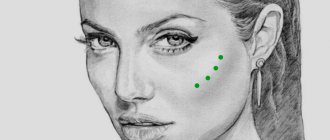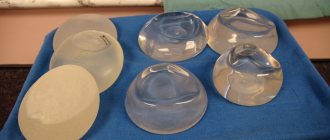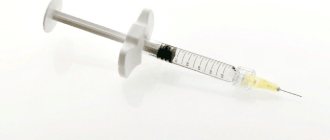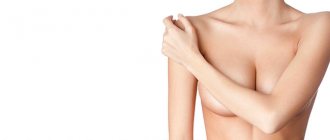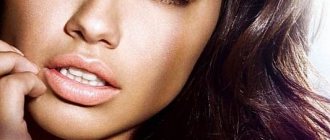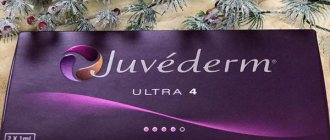Correction of the shape of the cheekbones using fillers
Correction of cheekbones with fillers is a safe and proven way to add expressiveness to your face, highlight your strengths and hide flaws. Advantages of the technique:
- the effect is noticeable from the first session;
- there is no need for surgical intervention;
- the procedure is practically painless;
- The drugs used are safe for the body and are eliminated independently.
Enlarging the cheekbones with fillers also has a rejuvenating effect. Thanks to hyaluronic acid, the skin receives nutrition and hydration, becomes more elastic and fresh.
Cheek plastic surgery, what is it?
Cheekbone plastic surgery is usually called a procedure for correcting or replenishing lost volume compared to the original size. For facial modeling, the following are used: hyaluronic acid, polylactic acid or calcium hydroxyapatite (Radiesse).
Beautifully highlighted, they reduce age, add femininity and give the face a radiant and rested look. An additional benefit of this procedure, in addition to correcting the shape of the cheekbones, is smoothing and rejuvenation of the skin.
The procedure guarantees an impressive and immediate effect that lasts for about 12-18 months. You can return to your normal life immediately after the procedure.
What are fillers and how do they help restore youth?
Fillers are special gels, most often based on hyaluronic acid, which are injected under the skin, nourishing and filling it with useful substances.
Gels come in different densities and are used depending on the condition of the skin and the expected result. The BL clinic uses only certified fillers made in America and Europe. They are completely safe, and the effect of the procedure lasts up to 1.5-2 years. Effect Up to 1.5-2 years Duration of procedure Up to 30 minutes Rehabilitation Up to 1-3 days Application
anesthesia Discuss the procedure with a specialist
Leave your phone number. We will call you back!
Review of the best drugs
Juvederm Voluma (Allergan Inc)
- Manufacturer: USA.
- Release form: 2 syringes, 1 ml each.
- Price: 13,500 rub.
Contains a concentration of hyaluronic acid - 20 mg/ml. It has a gel consistency with increased density, viscous and viscous structure, which ensures uniform distribution and lifting of the cheekbones.
Moisturizes and nourishes the skin, normalizes metabolic processes. Contains lidocaine, which relieves pain. Valid for up to one and a half years.
Radiesse (Merz-Aesthetics)
- Manufacturer: Germany.
- Release form: 0.8 ml, 3 ml in a syringe.
- Price: 8,000/18,500 rub.
The basis of the drug is calcium hydroxyapatite. Recommended for enhancing the synthesis of collagen and elastin, increasing the volume of soft tissues. Does not spread, does not migrate to neighboring areas. It is characterized by a lasting effect up to one year or longer.
Buyanov Sergey Yurievich (Expert Doctor):
The effect of hydroxyapatite in some cases continues until the end of the patient’s life. It all depends on the qualifications of the cosmetologist.
Restylane Perlane (Q-Med)
- Manufacturer: Sweden.
- Release form: bottle 0.5/1 ml.
- Price: 10,500/13,000 rub.
Gel containing biosentified hyaluronic acid at a concentration of 20 mg/ml. It has a dense structure, forms the correct oval of the face.
Depending on individual characteristics, the effect lasts up to two years.
Surgiderm 30 XP (Corneal)
- Manufacturer: France.
- Release form: 2 syringes of 0.8 ml.
- Price: 8,500 rub.
The drug contains reticular 3D-matrix high content hyaluronic acid 24 mg/ml. Deeply moisturizes, activates collagen synthesis, removes age spots, smoothes wrinkles. It is safe and can be used at any age without addiction or consequences.
The result has been observed for several years.
SCULPTRA (Sanofi Aventis/Sinclair Pharma)
- Manufacturer: France.
- Release form: 2 bottles of 5 ml.
- Price: 12,500 rub.
The filler, which is based on a polylactic acid ester (polylactide implant), is removed from the body after 3 years.
Provides lasting results and long-lasting effects while maintaining facial expressions. The gel creates a lifting effect and sculpts the cheekbones.
AestheFill (Regen Biotech)
- Manufacturer: Korea.
- Release form: 200 ml bottle.
- Price: 13,500 rub.
The composition is represented by polylactic and glycolic acids. A prolonged collagen stimulator replenishes volume in the temples and cheeks, corrects facial contours and improves skin quality.
It works exclusively in the injection area and does not migrate between tissues, therefore it ensures that the result is preserved for up to 2 years.
Argiform (NC Bioform)
- Manufacturer: Russia.
- Release form: 2.5 ml syringe.
- Price: 3,500 rub.
Contains 3-dimensional polyacrylamide and water with silver ions. Used for soft tissue endoprosthetics, correction of facial shape and correction of folds. Not used to eliminate superficial wrinkles. On average, it lasts from 12 to 18 months.
Princess Volume (Croma)
- Manufacturer: Austria.
- Release form: 1/2 ml in a syringe.
- Price: 8,000/11,500 rub.
The dense but viscous product consists of hyaluronate of non-biological origin. Monophasic gel finds empty spaces between tissue structures and fills them evenly, thereby changing the composition of the deep layer of skin, which ensures its rejuvenation. Validity period is one year or longer.
Buyanov Sergey Yurievich (Expert Doctor):
Hyaluronic acid attracts and retains fluid, thereby enhancing metabolic processes, accelerating cell division and collagen synthesis.
Yvoire Contour (LG Chem)
- Manufacturer: South Korea.
- Release form: 2 ml in a syringe.
- Price: 6,000 rub.
It has increased elasticity and resistance to deformation, so it achieves the greatest effect in facial areas.
The product is designed to replenish lost volume in the face, increasing cheekbones, cheeks and chin. Does not contain lidocaine, which minimizes the risk of developing an allergy to the drug. Valid for up to one and a half years.
Who is suitable for cheekbone augmentation with hyaluronic acid?
If you notice that your face is losing its expressiveness, you should consult a cosmetologist. At the age of 25-30, superficial cosmetic procedures are usually sufficient to maintain youth. A more effective solution after 30-35 years is correction of cheekbones with fillers. This technique gives good results if you have:
- sunken cheeks due to age-related changes or sudden weight loss;
- pronounced drooping of the skin on both sides of the chin (the so-called “jowls”);
- too noticeable nasolabial folds. This problem is common in women with thin faces, and correcting the cheekbones with hyaluronic acid will help solve the problem.
For expressionless cheekbones, injectable gels also help give the face sculpture and expressiveness.
Tips for correcting cheekbones without surgery after 55 years
Before and after cheekbone contouring at 55+ years old, the difference is very noticeable. But cosmetologists insist that this procedure is no longer enough to eliminate all age-related changes. According to experts, the best option is to combine the injection of fillers with thread lifting, botulinum therapy, and laser rejuvenation. The total cost of personal care procedures will be higher, but the result will please you for a long time.
How to enlarge cheekbones with fillers
Correction of cheekbones using fillers in our clinic is carried out after consultation with a cosmetologist. Preparation does not take much time, and the procedure itself lasts about 30 minutes. In some cases, it is necessary to take an X-ray of the face in advance so that with its help the doctor can choose the most harmonious shape and volume of the cheekbones.
During the procedure, the specialist cleanses the skin and marks injection points. The next stage is anesthesia. Next, the cosmetologist introduces fillers into certain areas of the cheekbones along the markings and evenly distributes them with massage movements. The last stage is antiseptic treatment of the skin and doctor’s recommendations.
Contour plastic surgery with cannulas
The technique for performing contouring with cannulas is the same as with needles. The main difference is in the tools. Cannulas are flexible, very thin and, unlike a needle, have a blunt round tip with a hole on the side.
Thanks to this design, it is impossible to puncture blood vessels or damage nerves during the procedure, which will protect against the occurrence of hematomas and other undesirable reactions.
Cheekbone enlargement price
The cost of cheekbone correction with hyaluronic acid depends on many factors, including the condition of the skin, the scale and features of the procedure.
Usually the gel does not cause side effects, but in extremely rare cases, slight redness and swelling at the injection site may occur. They go away on their own within 1-3 days. During the recovery period, you should avoid significant physical activity and temperature changes, do not use cosmetics, and carefully but thoroughly cleanse your face before going to bed.
If you want to enlarge your cheekbones with hyaluronic acid, make your face shape more beautiful and expressive, and also get rid of nasolabial folds, contact the cosmetologists of the BL clinic.
Indications and contraindications
Rejuvenation through the introduction of fillers to improve skin condition is recommended for:
- age-related changes (appearance of wrinkles, excessive thinness of the face);
- birth defects;
- lack of volume in the area of the cheekbones and cheeks;
- the need to restore the contour in the temporal zone;
- pronounced nasolacrimal groove;
- dull, lifeless skin color;
- the appearance of nasolabial folds;
- the presence of pigment spots;
- drooping cheekbones;
- facial asymmetry.
Correction is not carried out in the following cases:
- pregnancy and lactation;
- exacerbation of chronic diseases;
- oncology, diabetes;
- tendency to allergic reactions;
- skin damage on the face;
- dermatological and infectious diseases;
- poor blood clotting;
- a large number of moles, papillomas;
- predisposition to the formation of keloid scars;
- the presence of silicone and other non-biodegradable fillers.
Preparation for the procedure
No special measures are provided before the introduction of fillers.
In some cases, your doctor may recommend that you avoid using medications that cause bleeding (eg, aspirin, ibuprofen) for several weeks.
also undesirable to give injections in the first three days of the menstrual cycle (due to decreased blood clotting and the likelihood of hematoma formation at the injection sites).
Surgical installation of zygomatic implants –
Zygoma zygomatic implants have the most complex installation (compared to any other dental implant options), and therefore require extensive experience from the surgeon, not only in dental implantology, but also necessarily in maxillofacial surgery. Working with them requires careful preparation, including mandatory preliminary computer modeling of the position of the implants, performed in the special Nobel-Clinician program from Nobel Biocare.
When zygomatic implants first appeared, surgeons initially used exclusively the intrasinusal route of introducing Zygoma implants into the zygomatic bone (i.e., through the maxillary sinus). This type of operation required creating a hole in the side wall of the sinus in order to be able to move the sinus mucosa to the side. And thus, after installation of the implant, the mucous membrane of the sinus will be directly adjacent to the body of the implant, and that is why most Zygoma implants have threads only in the lower third.
Options for installing zygomatic implants –
The original method of installing zygomatic implants “through the sinus” was later modified. Firstly, the so-called “extrasinusal route” for introducing zygomatic implants was developed, which does not affect the maxillary sinus at all. Secondly, a surgical technique was developed that is something between intrasinus and extrasinus by introducing zygomatic implants. In this case, a channel is made in the side wall of the maxillary sinus for the zygomatic implant (within the thickness of the bone), and it turns out that the implant does not enter the sinus, but is only adjacent to its mucous membrane.
Currently, all 3 methods are used, and the choice between them depends on the specific clinical situation. The choice will depend on the anatomy of the individual patient, i.e. individual characteristics of the bones of the facial part of the skull (24stoma.ru). The intrasinusal route of insertion of zygomatic implants through the sinus is currently used only in cases where the other 2 insertion options simply cannot be implemented in a particular patient (for example, due to the anatomical features of the upper jaw and zygomatic bone).
All-on-6 technique (with installation of 2 Zygoma implants):
* Please note that in the video of the surgical operation above, the extrasinus route of insertion of zygomatic implants into the zygomatic bone is used (i.e. without opening the maxillary sinuses). According to statistics from Nobel Biocare, if only 1 zygomatic implant is installed on each side of the upper jaw, the “through the sinus” route of implantation is usually required no more often than in only 6% of cases.
Required number of zygomatic implants –
It should be noted that usually only 2 zygomatic implants are installed, regardless of the method used - “All-on-4” or “All-on-6”.
If we are talking about the All-on-4 technique, then a completely fixed prosthesis will be fixed on only 4 implants, two of which can be zygomatic. The latter are placed in the projection of the missing 5 or 6 teeth (one on each side of the upper jaw), while conventional classical short-length implants are installed in front. If the patient undergoes the All-on-6 technique, then usually only 2 zygomatic implants are also used (they are placed in the projection of the missing 6 teeth - one on each side of the upper jaw), and the remaining four implants will be of a classic shape and size. The latter will be installed in the tooth position 4-2|2-4. But usually with All-on-6 there is no need to use zygomatic implants - except for situations where the patient has very powerful jaws and well-developed masticatory muscles.
Installation of 4 or 6 zygomatic implants –
But in some cases, implant surgeons recommend that the patient install 4 or 6 zygomatic implants at once, but in no case should you agree to this! In this case, the route of insertion of the implants will necessarily be intrasinusal (through the sinus), and given the number of zygomatic implants, the risk of developing sinusitis + other complications sharply increases. Plus, we should not forget about the high traumatic nature of such an operation, as well as a much more difficult postoperative period.
Installation of 4 and 6 zygomatic implants (view on Rg-image) –
Reviews on zygomatic implantation –
The most recent reviews of clinical studies on zygomatic implantation indicate that the 12-year cumulative survival rate of zygomatic implants and denture structures on them is about 95.21% (statistics based on 68 studies in which 4556 zygomatic implants were installed - in a total of 2161 patients). Of course, the installation of zygomatic implants is more traumatic and has a more painful and longer postoperative period, but very often zygomatic implantation is the patient’s last chance to receive a permanent prosthesis without undergoing bone grafting.
Patient video review about zygomatic implantation –
According to a clinical study (“Clinical Performance of Zygomatic Implants—Retrospective Multicenter Study” by Ruben Davó, Simonas Bankauskas, 2022), where a total of 182 zygomatic implants were installed in 82 patients, the following complications were observed:
- maxillary sinusitis (in 10.1% of patients),
- peri-implantitis (in 0.8% of patients).
Important: once again we draw your attention to the fact that it is not just implant surgeons who should install zygomatic implants (the doctor must have long-term experience in maxillofacial surgery). We are talking about this because recently more and more dentists are trying to take on zygomatic implantation.
Contraindications to zygomatic implantation –
In addition to traditional contraindications to dental implantation, this also includes contraindications associated directly with the method of zygomatic implantation. We are talking about the patient having inflammation in the nasal passages or maxillary (maxillary) sinuses, for example, in the presence of a viral or bacterial infection, chronic ENT pathology. The fact is that zygomatic implants will be located directly next to the mucous membrane of the sinuses, and therefore inflammation in them can also lead to rejection of the zygomatic implants.
Therefore, it is very important at the stage of preparation for implantation to identify inflammatory diseases of the ENT organs (including the paranasal sinuses), which is possible after referring the patient for a consultation with an ENT doctor and performing a computed tomography scan of the jaws and sinuses. If inflammation is detected, then zygomatic implantation will be possible only after complete sanitation of the sinus cavity of the nasal cavity. We hope that our article was useful to you!
Sources:
1. Dental education of the author of the article, 2. Personal experience as an implant surgeon, 3. “American Academy of Implant Dentistry” (AAID), 4. https://www.nobelbiocare.com/, 5. “National Library of Medicine” (USA).
Can it be done at home?
Like any other invasive procedure, contour correction is done in a medical or specialized institution.
It is impossible to maintain the necessary sanitary and hygienic conditions at home. In addition, a specialist working without a license in a place not designated for this purpose does not bear any responsibility for his work, as well as for the drugs with which he works. That is, in the event of undesirable consequences or an unsatisfactory result, there will be no one to file a claim, and correcting errors is sometimes much more expensive than the original procedure.
Complications encountered
Swelling after filler in the cheekbones is very common, subsides in about a day or two, and is a normal reaction of the body to the introduction of a foreign substance.- Necrosis is a serious complication and is extremely rare. The drug compresses blood vessels, disrupting blood circulation in any part of the tissue, causing the tissue to die. It can only be corrected surgically in a hospital.
- Redness is also considered an adequate reaction of the body to intervention. It goes away spontaneously and quickly.
- Temperature at the injection site can be a symptom of an allergic reaction, as well as an individual reaction to the procedure. A specialist will be able to determine exactly what is happening.
We invite you to watch a video about what complications are possible after the filler injection procedure:
Types of Zygoma zygomatic implants –
Zygomatic implants Nobel Zygoma come in several types.
- “Brånemark System Zygoma” line – implants in this line have a modern TiUnite surface, which allows for rapid and controlled implant healing. The advantage of this line is the huge number of orthopedic components that make it possible to perform prosthetics even in the most difficult clinical situations. Below you can see what such a zygomatic implant looks like.
- “Nobel-Zygoma 45°” line – these implants have a 45° inclined platform, and thanks to this beveled edge they are used with straight multi-unit abutments. In addition, these implants also feature a TiUnite surface as well as a specially designed apical portion of the implant to provide multicortical anchorage. The advantage of this line is a wide selection of orthopedic components for prosthetics, similar to the Brånemark System Zygoma.
- The Nobel-Zygoma 0° line also has a TiUnite surface, plus a special design of the apical part of the implant, providing multicortical fixation. Implants in this line are distinguished by the fact that they are used with angled Multi-unit abutments 45° or 60°, which simplifies prosthetics when the axes of the implants diverge. Zygomatic implantation using Nobel-Zygoma 0° will cost more than using Nobel-Zygoma 45°, which is due to the use of more expensive angular versions of multi-unit abutments.
Important: Please note that the implants of the NobelZygoma 45° and NobelZygoma 0° lines have threads only in the lower third. This is important when installing these implants through the maxillary (maxillary) sinuses, when the mucous membrane of the sinuses will be adjacent to the surface of the implants. Therefore, the absence of threads in this area of Zygoma implants makes sense.
